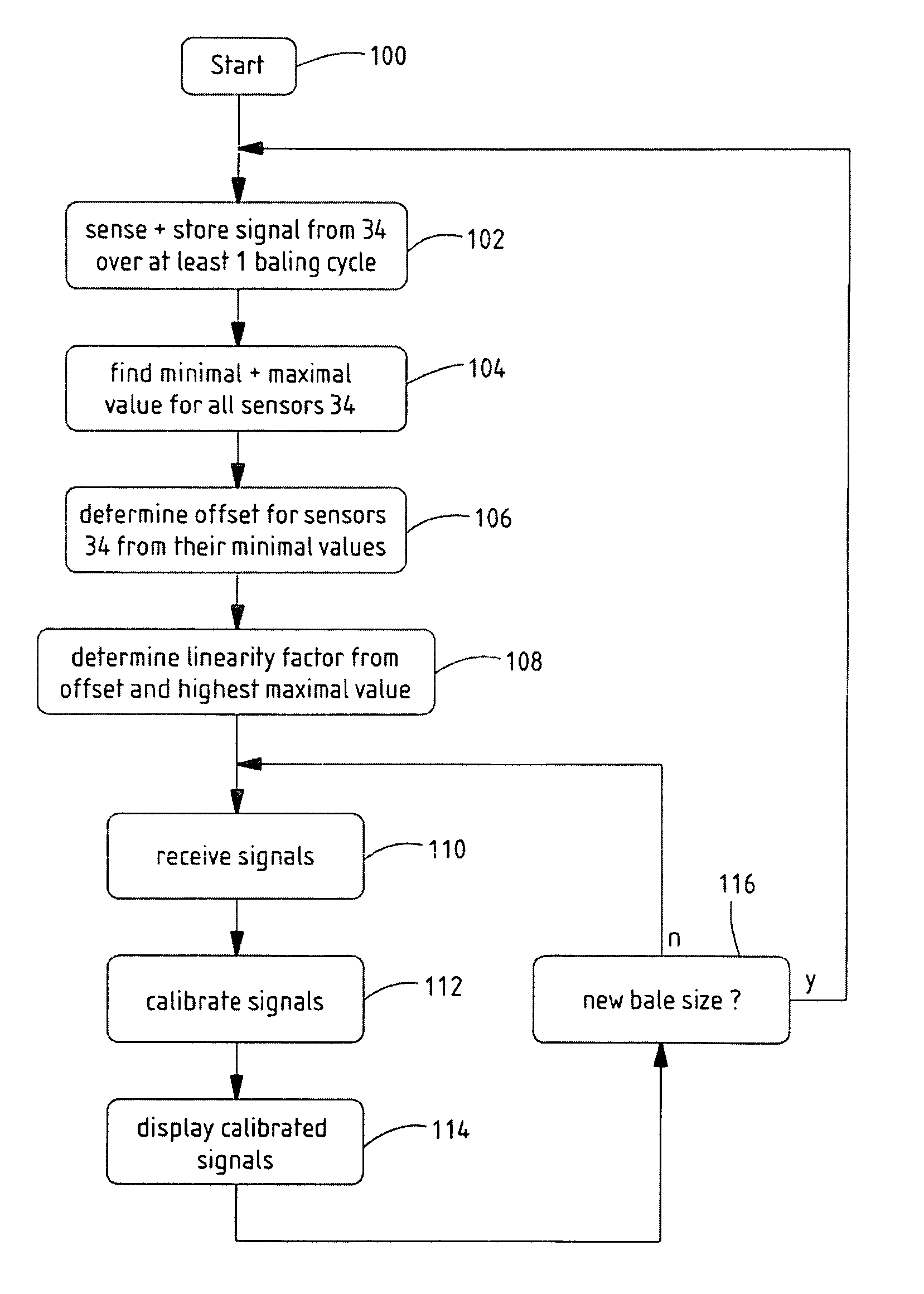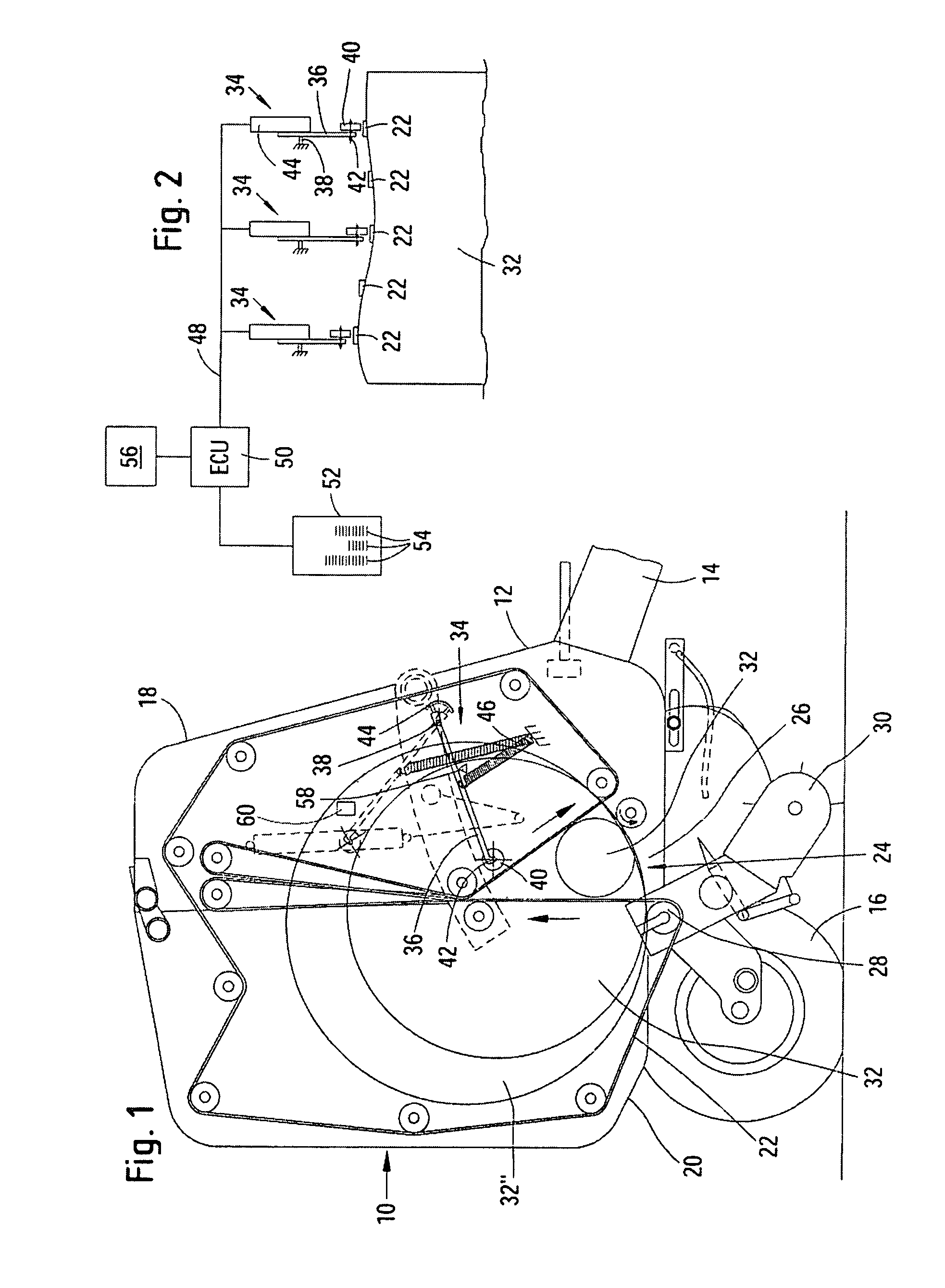Baler with automatic sensor calibration
a baler and sensor technology, applied in baling, picking devices, agricultural tools and machines, etc., can solve the problems of improper calibration of balers, inability to accurately calibrate, and inability to accurately measure the accuracy of balers
- Summary
- Abstract
- Description
- Claims
- Application Information
AI Technical Summary
Benefits of technology
Problems solved by technology
Method used
Image
Examples
Embodiment Construction
[0024]Referring now to the drawings, FIG. 1 shows a rotary baler 10 with a housing 12 coupled to an agricultural tractor, not shown, by means of a towbar 14, in order to be towed across a field to the right, in a direction of operation. The baler 10 is supported on wheels 16 and the housing 12 is composed of a rigid front housing half 18 and a pivoted rear housing half 20, which are connected to each other via an upper joint. The housing 12 carries a multitude of rolls or rollers. Several endless conveying elements 22, extending alongside each other, are carried over the rolls. The conveying elements 22 largely surround a baling chamber 24, together with side walls of the housing 12. In this embodiment, the conveying elements 22 are configured as belts but may be otherwise configured, for example as chains. An inlet 26 is provided in the lower region of the baling chamber 24. The inlet 26 is bordered to the rear by a roll 28 and permits the entry of crop taken up by a pick-up 30 int...
PUM
 Login to View More
Login to View More Abstract
Description
Claims
Application Information
 Login to View More
Login to View More - R&D
- Intellectual Property
- Life Sciences
- Materials
- Tech Scout
- Unparalleled Data Quality
- Higher Quality Content
- 60% Fewer Hallucinations
Browse by: Latest US Patents, China's latest patents, Technical Efficacy Thesaurus, Application Domain, Technology Topic, Popular Technical Reports.
© 2025 PatSnap. All rights reserved.Legal|Privacy policy|Modern Slavery Act Transparency Statement|Sitemap|About US| Contact US: help@patsnap.com



